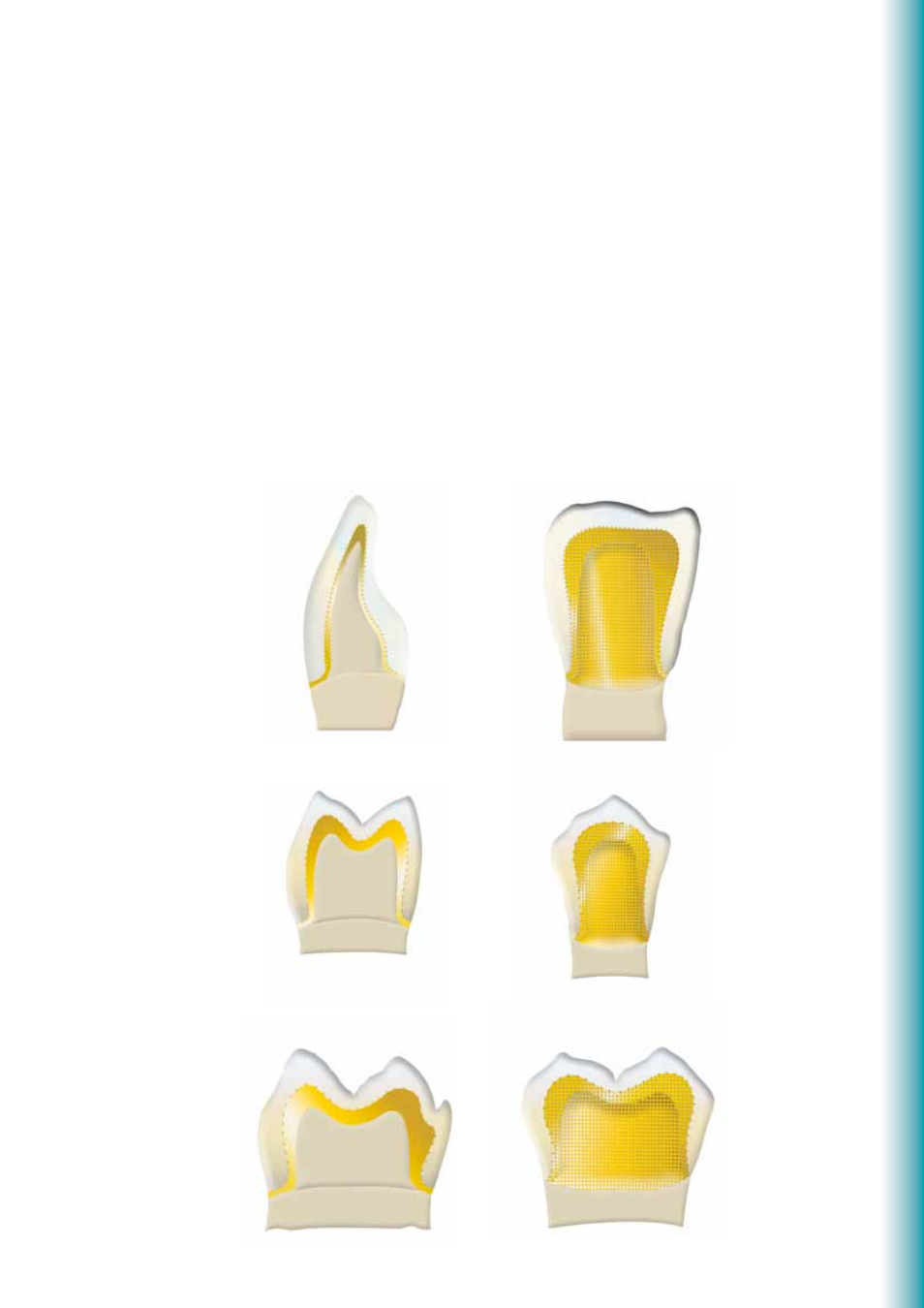Adoro – Ivoclar Vivadent SR Adoro User Manual
Page 31

31
Adoro
®
–
Practical Procedure
for Fixed, Metal-Supported Restorations
SR
Practical
Pr
ocedur
e
for
Fixed
Metal-Supported
Restorations
Framework Design
The following points must be observed for the design of frameworks for composite veneers:
1. Framework design for full-coverage veneers (ideal space conditions)
With full-coverage veneers, the framework has to reflect the shape of the tooth in a reduced form. Design the framework
in such a way that it supports the cusps resulting in a virtually even layer thickness of the veneering composite in the
cusp-fissure area. In this way, the masticatory forces occurring during functional chewing are exerted on the framework
rather than on the veneering composite. In case of unfavourable preparations, the missing tooth structure has to be com-
pensated by the design of the framework and not the veneering composite. Furthermore, an even layer thickness
facilitates the creation of a harmonious shade effect while full-coverage veneering provides a maximum level of esthetic
beauty and function. All areas of the framework should be smooth and rounded to prevent delamination and cracking.
Angles and edges should be rounded out already in the wax-up and not in the metal in order to avoid undermining the
minimum framework thickness. The thickness of the metal framework for single crowns must not be less than 0.3 mm
and 0.5 mm for bridge abutments after finishing (see diagram).
Anterior crowns
Premolar crowns
Molar crowns
